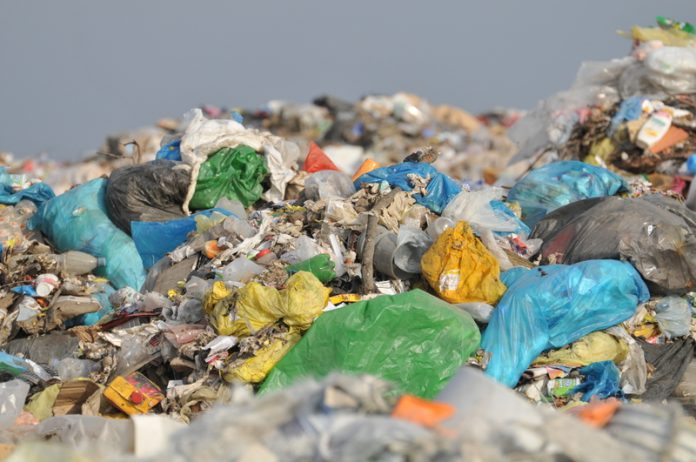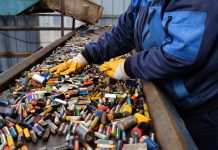Richard Walker, Marketing Manager at Reconomy shares the benefits of setting a 0% landfill target and explains why it is an achievable goal for businesses
When dealing and disposing of waste, new guidelines in 2011 stipulated that businesses and organisations should apply waste hierarchy systems when disposing of their waste. These rules suggest that all organisations who deal with waste should dispose of it in an environmentally friendly way.
The ‘take, make, dispose’ economic model is now considered to be outdated, and as a way of disposing of waste, it is now beginning to reach its physical limitations.
To combat this problematic issue, the action is now being taken. By 2020, as part of their Zero Waste Regulations initiative, Scotland has placed a landfill ban on municipal biodegradable waste; in the UK, this is the first ban of its kind, which could see England and Northern Ireland following suit shortly afterwards.
Although the UK set targets to cut food waste by 5% before 2016, food waste actually rose by 4.4% between 2012 and 2015. Now, the question still remains, how can the UK achieve its zero waste to landfill status? Reconomy, providers of skip hire for commercial waste purposes, explore whether this proposal can ever be achieved.
Defining a zero waste to landfill strategy
Simply stated, a zero waste to landfill strategy means that no waste from a business is disposed of in a landfill site. Instead, these materials may be recycled in different ways, reused or produced into another form of energy. If recycling is the method used, the materials involved are as follows:
- Cardboard. This is recycled in a paper mill.
- Glass. This is melted down and then created into new glass products and containers.
- Plastic. This is recycled and made into new packaging.
- Food. This waste is sent to be used as compost.
- Organic material. This can be broken down through a process known as anaerobic digestion. This is the breakdown of organic material by micro-organisms when oxygen isn’t present. Such a method sees the methane-rich gas biogas being produced, which can then be used as a fuel and a digestate — a source of nutrients that are able to be used as a fertiliser.
Processes such as gasification and incineration can also be used when waste cannot be recycled, which means that energy can still be recovered from waste that can’t be recycled.
Audits need to be carried out by businesses to ensure that all waste arrives at the correct facility. If they can’t be tracked, then the zero waste to landfill label cannot be attributed to that organisation’s waste, which is why tracking is so important within this process.
Auditing and tracking systems can often be difficult to implement in the long-term; this is because they are to time-consuming to monitor and are costly too. This then casts doubt on whether organisations throughout the UK and the world, can direct all their waste streams to recyclable solutions.
Being consistent with zero waste to landfill
Achieving a zero waste to landfill target is a philosophy for large-scale organisations to work towards, as opposed to a day to day reality.
For businesses to achieve this goal in the long-term, infrastructures surrounding businesses regarding the disposal of their waste needs to change; this includes materials, business models, regulations and public infrastructures for this idea to be workable. This is, however, a two-way solution – as businesses need to eliminate their waste that comes from suppliers – whilst making sure that waste isn’t produced during manufacturing and when products and services are passed onto customers and clients.
Even during the process of energy recovery, waste in the form of ash is created during incineration, which can also be problematic when businesses attempt to eradicate waste to landfill. Clearly, more needs to be done to innovate these processes in the longer term, so that zero waste to landfill can be achieved in this lifetime.
Circular economies could be set to help
Circular economic models can help to take away the strain of the out of date ‘take, make, dispose’ model.
By keeping components, products and materials at the highest possible value and utility, positive development cycles are created when they are restorative and regenerative in their design. As a result, natural capital can be enhanced and preserved, resource yields optimised and system risks kept to a minimum through the management of finite stocks and renewable flows.
Energy can be created from more efficient sources due to advancing technologies. However, in the goal to achieving zero waste to landfill figures, a circular economy will mean that waste will not exist when a product’s biological and technical components are designed with the intention to always fit within a biological and technical materials cycle.
The principles of a circular economy are now being practiced across the globe. In the Netherlands, for example, around 16% of the new stream of products being introduced to the metal and electrical sectors were items that had either been repaired or reused. Further afield, China has been running mandatory energy saving and pollution reduction programmes nationwide since 2006. These are in place to address issues with what researchers in the country have referred to as ‘low resource efficiency’ and ‘high pollution levels’.
Sources
https://www.recycle-more.co.uk/zero-waste-to-landfill
https://www.localgov.co.uk/Local-authorities-urged-to-tackle-food-waste-crisis/42867
https://www.carbontrust.com/news/2017/03/what-is-zero-waste-to-landfill/
https://www.ellenmacarthurfoundation.org/circular-economy/overview/concept
https://www.ellenmacarthurfoundation.org/circular-economy/overview/characteristics
https://www.greenfacts.org/en/circular-economy/l-2/11-circular-economy-principles.htm
Richard Walker
Marketing Manager
Reconomy











